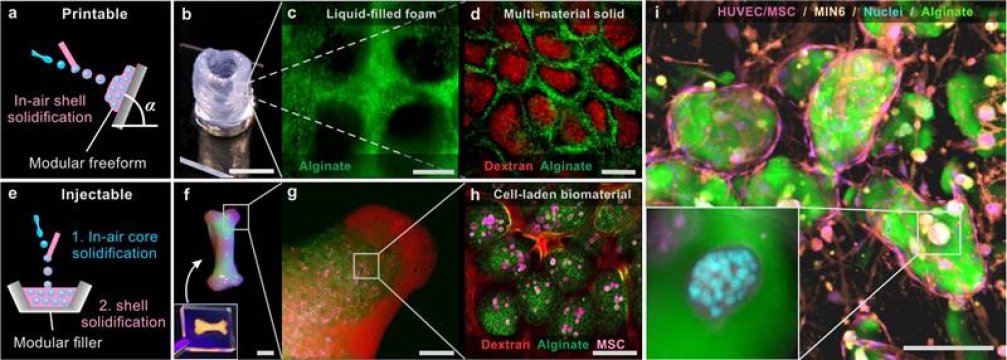New Technique Advances 3-D Printing of Living Cells

Study in a Sentence: Using a new technique called “in-air microfluidics,” scientists succeeded in printing 3-D structures with live cells. By shooting a jet stream of fluid into another jet stream of cells, in-air microfluidics allows partially solidified droplets of live cells to be created in-flight and deposited onto a substrate to build a 3-D structure filled with cells and fluid that recapitulates the structure of natural tissues.
Healthy for Humans: Unlike other 3-D printing techniques, which use ultraviolet light or heat that can damage living cells, this new tissue engineering technique does not harm cells. Hence, it may be possible one day to use it to repair damaged tissues in patients using their own cultured cells.
Redefining Research: Whereas most microfluidic technology requires the use of chips with tiny channel which can impede the flow of fluid and limit clinical and industrial applications of 3-D bioprinting, this new chip-free platform reduces the production time by 10- to 100-fold and allows for the reaction of different combinations of fluids to create various biological building blocks in a single step.
Printing a liquid-filled foam and including living cells. Credit: Image courtesy of University of Twente
References
- Visser CW, Kamperman T, Karbaat LF, Lohse D, Karperien M. In-air microfluidics enables rapid fabrication of emulsions, suspensions, and 3D modular (bio)materials. Sci Adv. 2018;4:eaao1175. doi: 10.1126/sciadv.aao1175.








